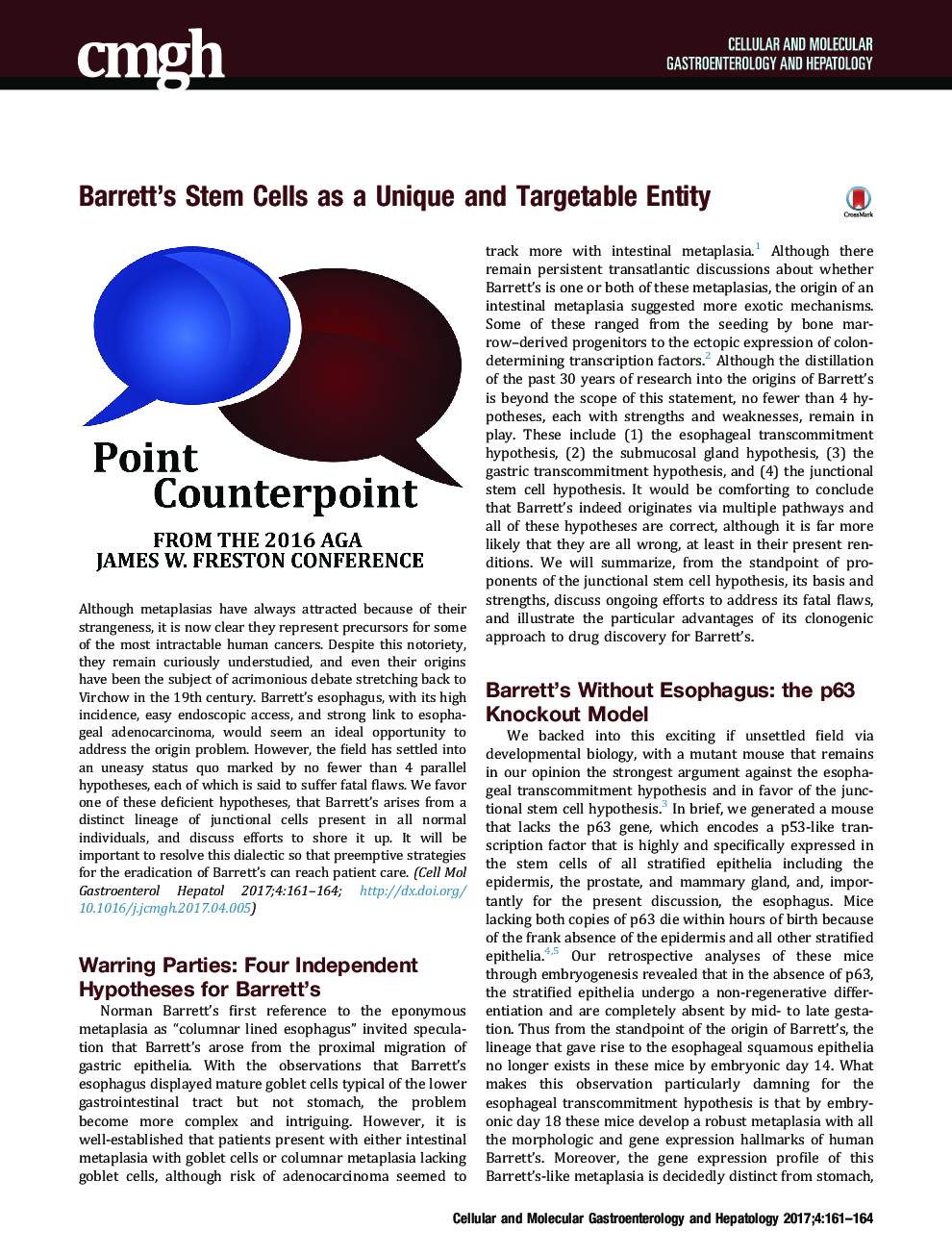| Article ID | Journal | Published Year | Pages | File Type |
|---|---|---|---|---|
| 5517175 | CMGH Cellular and Molecular Gastroenterology and Hepatology | 2017 | 4 Pages |
Although metaplasias have always attracted because of their strangeness, it is now clear they represent precursors for some of the most intractable human cancers. Despite this notoriety, they remain curiously understudied, and even their origins have been the subject of acrimonious debate stretching back to Virchow in the 19th century. Barrett's esophagus, with its high incidence, easy endoscopic access, and strong link to esophageal adenocarcinoma, would seem an ideal opportunity to address the origin problem. However, the field has settled into an uneasy status quo marked by no fewer than 4 parallel hypotheses, each of which is said to suffer fatal flaws. We favor one of these deficient hypotheses, that Barrett's arises from a distinct lineage of junctional cells present in all normal individuals, and discuss efforts to shore it up. It will be important to resolve this dialectic so that preemptive strategies for the eradication of Barrett's can reach patient care.
